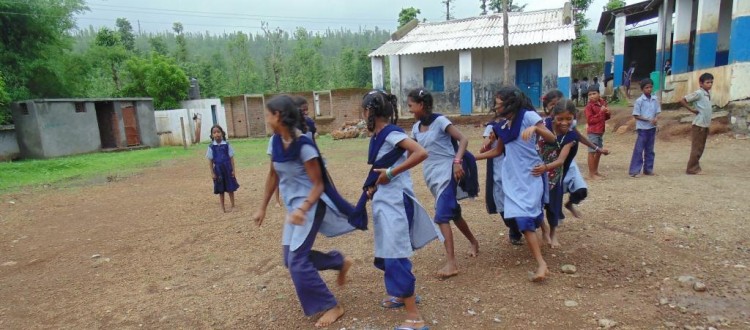Visiting the Dangs
Welcome to our Dangs blogs series. We want to highlight this stark, heavily-Tribal, isolated but incredibly beautiful area full of surprising culture and heartbreaking poverty. We’re incredibly excited to begin offering Nanubhai Scholars in the Dangs District this year. First up is Rachel, one of our 2013 Summer Research Fellows.
Back in June, we took a day site visit to an area of Gujarat called the Dangs, which is labeled one of the most “backward” regions of India, a term I have trouble coming to terms with using, though I recognize that Indians do not use it with the offensive connotation attached to it by the colonizers who originated that label. In India, backwards largely refers to tribal groups, and the Dangs is almost entirely tribal.
Once we arrived we met Vijaybhai, the Dangs District Project Manager for Help A Child of India (HACI), which is the first NGO to work in the Dangs. Vijaybhai brought us to a couple of tuition classes. Tuitions are taught by HACI animators (the name given to the instructors) and are often the only chance students ever receive for more individualized attention and the opportunity to really learn. Tuitions are common throughout India because it is clear students cannot possibly cover all the necessary materials during class time. In the Dangs especially, classes are overcrowded with too few teachers. Vijay told us that one of the primary schools has 120 students in standards 1-5, and only one teacher. Students often must walk 3 kilometers along muddy mountain roads to get to school, and often the teachers won’t show up if it rains (which during monsoon season is pretty regularly) because they don’t live in the village and are unable to travel when the roads are flooded.
Life in the Dangs is pretty stark. Many people are agricultural laborers, depending on small crops and migrating to cut sugarcane to survive. Many of the children are undernourished, their hair lighter than usual, and their eyes a bit yellowed where they should be white. That morning, we spoke with a group of fathers who were sitting outside a tuition class. They told us that they wished there were more opportunities for their children beyond 5th standard and that there was a closer secondary school. To me, these seem like pretty basic requests that the government should be able to provide, but it is so far from the reality for them. We visited some classrooms full of children eager to learn, and were later told that 80% will drop out of school after 7th standard, and only 1 or 2 from each village will have the opportunity to go to college. There is no better word than to call it heart breaking.
Overall, the day in the Dangs was really eye-opening and an important experience. Over the past year, I have learned about all of these issues, but never imagined what it might really be like for people dealing with these problems on a daily basis. It was a reality check for me. Seeing the work that HACI does was uplifting, but the fact that NGOs have to provide services because the government has failed to do so is troubling. These people are basically forced into a cycle of poverty, and even though it’s been well acknowledged that a quality, accessible education is a way to break this cycle, not enough resources are going to the people that need them most.

